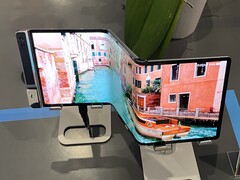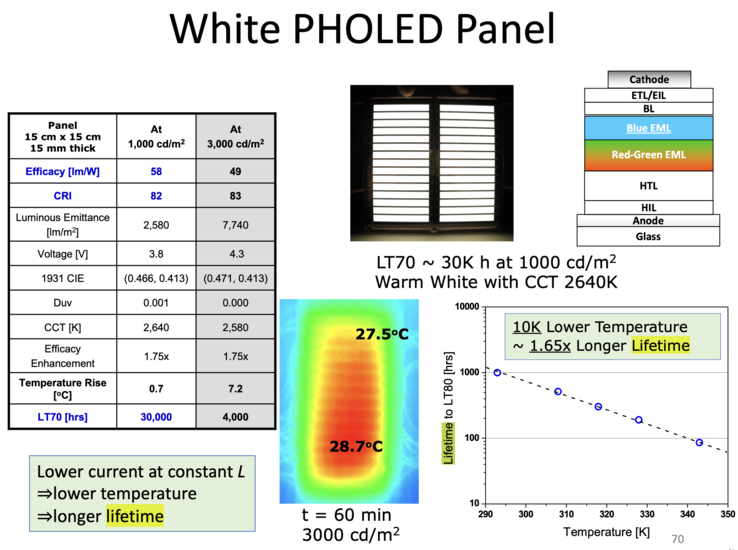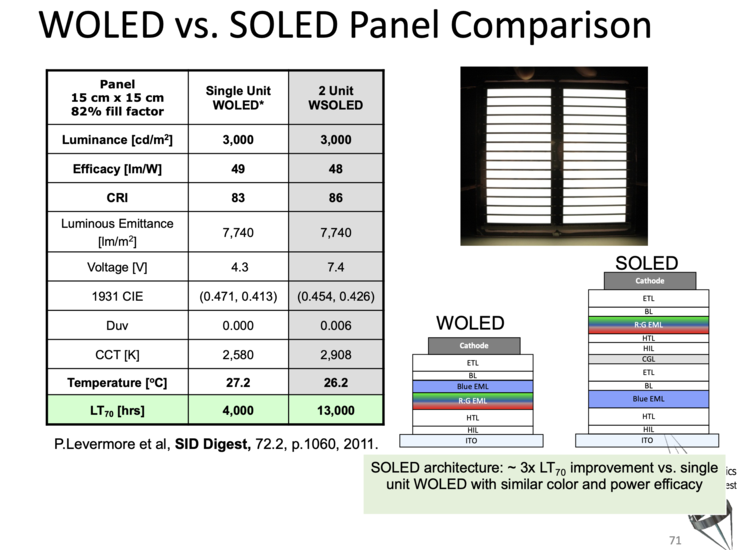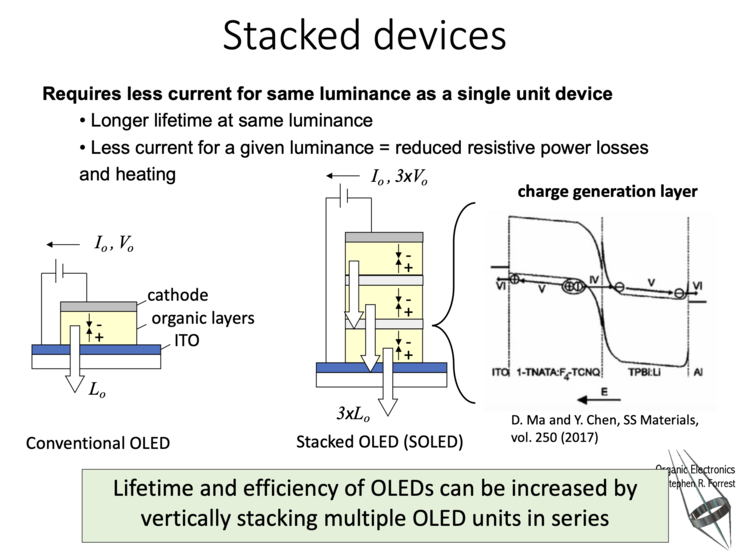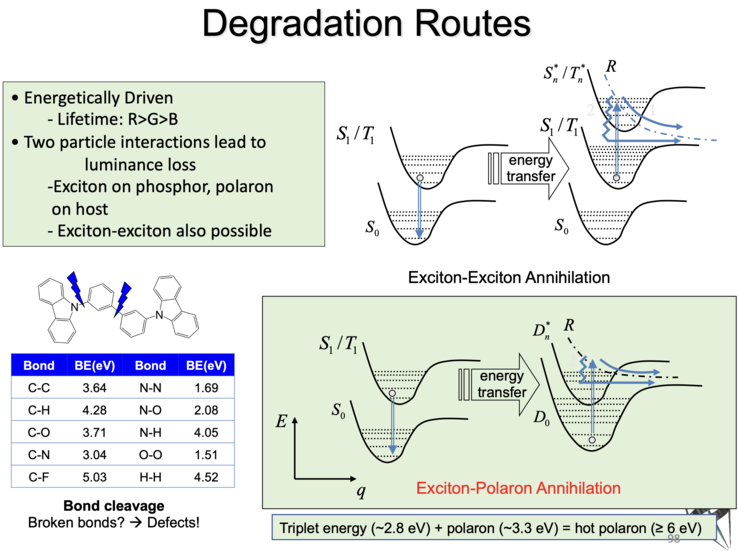If humans could not see blue colors, then one of the biggest problems of OLED technology would have been quickly solved, namely the short shelf life of blue OLE diodes. If the need for the blue diodes did not exist, OLED panels could last over 100 years, or about a million hours.
That's what University of Michigan professors Stephen R. Forrest and Chris Giebink said at the recent Display Week in Los Angeles during a four-hour short course designed to look at the current state of OLED technology. But since OLED technology is only a little over 35 years old, these numbers are based on aging tests.
That green OLEDs in particular don't have a problem with durability can definitely be judged in practice by now. When Sony installed green OLED displays in its Walkman almost 20 years ago, few would have thought that they would still work. However, the author of these lines owns such an Atrac Walkman himself, whose display still shines in excellent quality.
However, only green (or red) displays would only be suitable for special applications. This includes, for example, the digital signage sector For a real display, it is not possible without the color blue and the problems have not been completely solved even 35 years after the emergence of the technology, although they have been greatly reduced.
The durability of a panel is increased by various tricks. Important for the blue pixels: They have to stay cool. To achieve this, the surface area is increased and the brightness is reduced in relation to the surface area. In turn, green OLEDs, for example, can be very small and shine extremely brightly. As Forrest said, the green OLEDs in an iPhone shine at around 10,000 candela per square meter.
So it's the mix that matters (at the moment). To put that in perspective, even the brightest iPhone Pro only manages 1,600 in HDR mode (2,000 outdoors), and that's only in a small space for peak light. Bright light (and thus high temperatures in the panel) reduces the battery life enormously.
Brightness reduces durability
In a presentation slide, the researchers showed this in detail. A white PHOLED panel (phosphorescent/PH) with 1,000 candela/sqm achieves 30,000 hours of usability at the LT70 value (70 percent brightness after a certain number of hours), which is important for the industry. It isn't broken after that, but it is significantly darker. 30,000 hours correspond to almost 3.5 years of continuous use. This is not ideal for lamps, but sufficient for displays, since they are usually not in continuous operation - apart from applications like digital signage.
Tripling the brightness causes this value to drop drastically. The LT70 value drops to 4,000 hours, which also explains why OLEDs were sold comparatively dark for a long time. But they don't really have to be, because brightness itself doesn't ruin them.
OLEDs may be very bright - for a short time
As Giebink said, OLEDs are quite "happy" when they shine very brightly. One million candela per square meter are no problem for OLEDs - for one microsecond. But after that, they need a break of 100 microseconds. If you don't give OLEDs a break, they break, or as Forrest put it, "Anything can be a flash."
So durability, especially of blue OLEDs, is still a problem. But there are now more and more tricks to stretch them. One solution, for example, is vertical stacking of (transparent) OLED components. This spreads the load over more components. Durability can more than triple when using two stacked components. Research has been going on for decades, but only now is the technology slowly becoming a reality, according to the two researchers.
Part of the research is also focused on why blue OLEDs break down so quickly at the molecular level. Forrest and Giebink hope that a solution is not too far away. Two reactions are responsible for the loss of (blue) brightness. For red and green, the reactions are no longer relevant because the durability is so high.
The two researchers also argue that OLED technology should still be given a chance as a lighting medium. Currently, there is little activity in the market away from OLEDWorks after LG Display exited the lighting business shortly after Light+Building 2018. Forrest expects better CRI values compared to LED light sources and lower temperatures. Efficacy is expected at 150 lm/W, which is about in the range of LED technology. However, durability of 30,000 hours (LT70) is below LEDs (50,000 hours@LT70).
So OLED technology is not mature and further research is needed to perfect it. But that was once said of LCD technology 20 years ago, which became known for poor colors and streaking during movements and won over customers despite these drawbacks. At that time, LCD technology was as old as OLED technology is today, namely 35 years.
Source(s)
Display Week 2023




